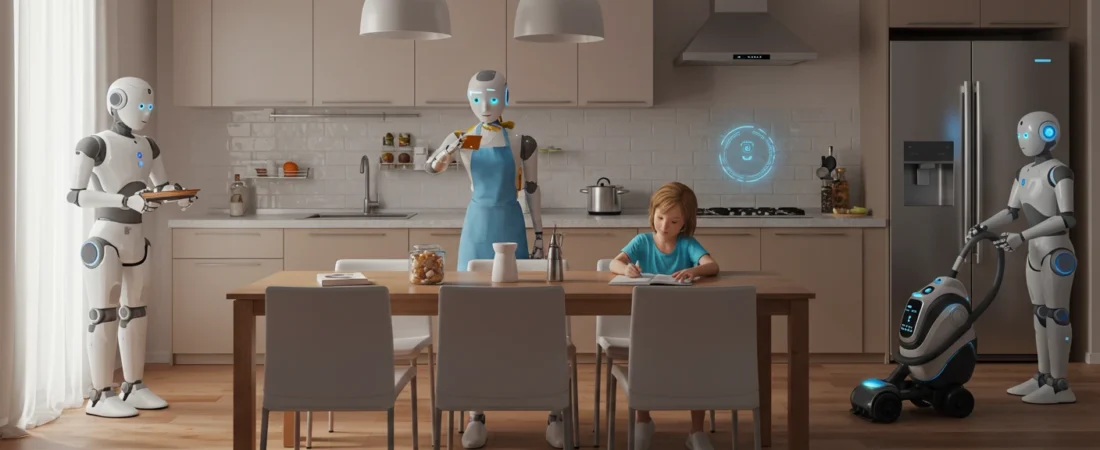How Smart Robots Are Revolutionizing Everyday Life
Smart robots are no longer a concept confined to science fiction, they’re now embedded in our daily routines. From vacuuming our floors to managing our schedules, smart robots are streamlining tasks with unprecedented efficiency. With advancements in artificial intelligence and robotics, the era of smart robots has arrived and it’s reshaping how we live, work, and interact.
The integration of artificial intelligence (AI) and robotics has made it possible for machines to learn, adapt, and even predict our needs. Smart robots, embedded with sensors, data-processing capabilities, and intelligent algorithms, are becoming key players in the evolution of domestic life. Moreover, whether through managing home automation systems or assisting in personal care, these robots are helping reduce the daily workload, increase efficiency, and provide comfort to users.
Moreover, smart robots bring consistency and reliability to household tasks. Unlike human beings, these robots do not tire or forget. They follow programmed routines or AI-generated decisions that improve with use. Over time, smart robots become more intuitive, adapting to household patterns, weather changes, and even emotional cues in some advanced systems. As a result, this reliability has made them indispensable in areas like elder care, parenting support, and even companionship for isolated individuals.
Beyond Voice Commands: How Smart Robots Are Revolutionizing Home Interaction
Many people are already familiar with voice-activated assistants like Alexa or Google Assistant, which represent the first wave of smart robotics in the home. However, today’s smart robots go far beyond voice commands. They can see, move, manipulate objects, and even interact with other devices in the home ecosystem. Consequently, this creates a symbiotic environment where all devices communicate and function in harmony, optimizing energy consumption, improving security, and enhancing the user’s lifestyle.
In the following sections, we’ll dive deeper into the specific areas where smart robots are taking over daily tasks from home automation and personal robotics to the rise of humanoid machines in everyday life.
Smart Robots and Home Automation: Making Smarter Homes a Reality
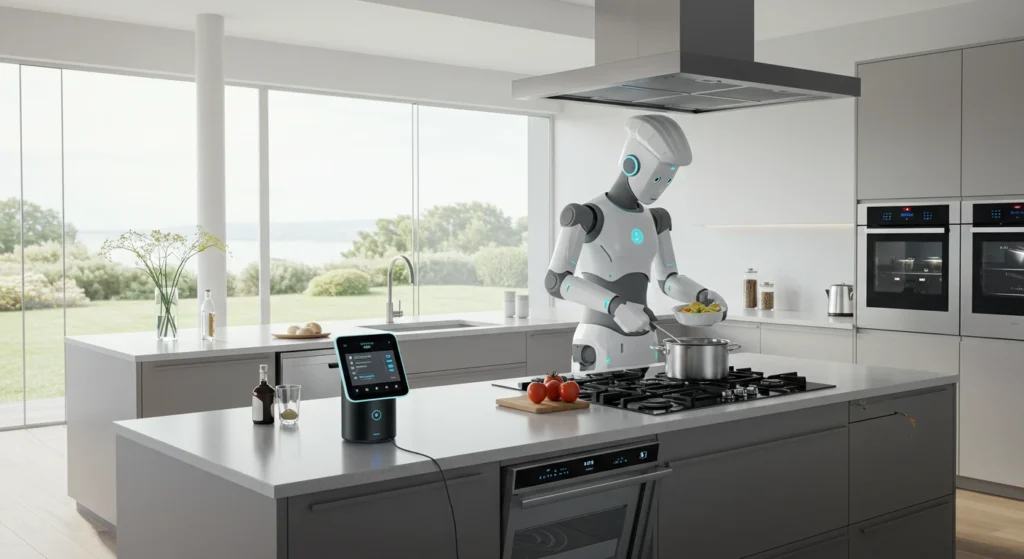
The Rise of Smart Home Ecosystems
The modern concept of home automation wouldn’t be complete without the inclusion of smart robots. With the rise of interconnected devices through the Internet of Things (IoT), households have become more intelligent and responsive. In fact, smart robots are at the heart of this transformation, orchestrating multiple home systems to work cohesively.
Smart thermostats, lighting systems, surveillance cameras, and voice assistants already form part of the home automation framework. However, robots bring a physical presence that allows them to interact with the environment more dynamically. Importantly, they can clean, organize, cook, and monitor household activities in real-time. The ability to move and perform physical tasks sets smart robots apart from traditional automation systems.
Moreover, the use of artificial intelligence allows these robots to learn from user behavior. For instance, a robotic vacuum like the Roborock S8 can create a map of the home, avoid pet bowls or toys, and even clean specific rooms based on voice instructions. Kitchen robots, such as the Moley Robotic Kitchen, can learn recipes and replicate human chefs’ movements to create gourmet meals with minimal input.
Smart robots also integrate with platforms like Google Home, Apple HomeKit, and Amazon Alexa, allowing for centralized control. For example, waking up in a smarter home might mean your coffee is brewed automatically, the curtains are opened based on the weather forecast, and your robot vacuum has already cleaned the hallway all before you get out of bed.
Intelligent Cleaning and Maintenance
Cleaning is one of the most practical applications of smart robots in daily life. Robotic vacuums and mops work autonomously, avoiding obstacles, adjusting to floor types, and scheduling themselves during optimal times. Window-cleaning robots have become more advanced, using suction technology and AI algorithms to ensure spotless panes without human intervention.
Lawn-mowing robots have also improved, operating within geofenced areas and returning to charge stations when their tasks are completed. These robots enhance outdoor maintenance without noise pollution or physical effort.
Artificial intelligence in Kitchen and Meal Prep
Kitchen robots are revolutionizing the way we prepare meals. Devices like Suvie or Tovala combine smart cooking with artificial intelligence to automatically adjust temperatures, cooking times, and ingredients. Additionally, they often connect to recipe databases and provide step-by-step guidance or even fully automate the cooking process.
Some high-end models use robotic arms and sensory data to chop vegetables, stir pots, and plate meals. Furthermore, these innovations save time, reduce waste, and promote healthier eating habits by offering portion control and nutrition tracking.
Energy-Efficient Automation
Energy-saving is another major benefit of smart robots. Robotic systems analyze consumption patterns and optimize energy use. For instance, a smart HVAC system might adjust heating based on your location and historical data, while smart lights dim when no one is in the room. Over time, these adjustments lead to significant cost savings and reduced environmental impact.
“Smart home technology is projected to reach a market value of $163.7 billion by 2028.” – Statista
Personal Robotics: Companionship and Assistance in Daily Routines with Smart Robots
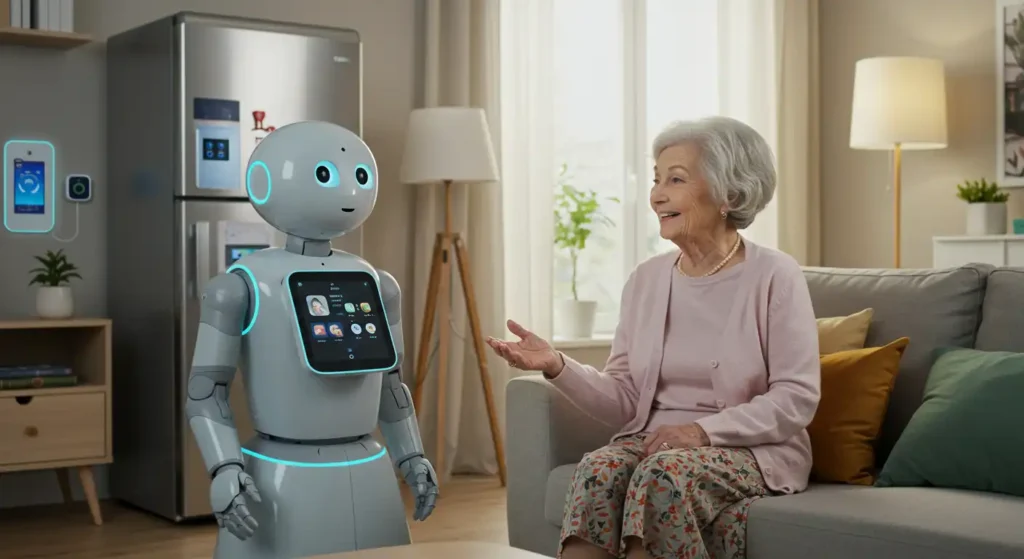
Beyond Utility – Toward Emotional Intelligence
Smart robots are evolving from purely functional devices to emotionally intelligent companions. Devices such as ElliQ or the Sony Aibo are designed not just to assist with tasks, but also to engage users on a personal level. These robots use facial recognition, natural language processing, and emotional AI to understand and respond to human emotions.
In elderly care, personal robots remind users to take medications, guide them through light exercises, and offer companionship. These robots play a vital role in reducing loneliness, which is increasingly recognized as a serious health risk among older adults.
Children also benefit from personal robots that make learning fun. Robots like Miko 3 engage children in conversations, quizzes, and interactive games that adapt to the child’s performance. These smart robots use machine learning to fine-tune content and promote personalized education.
Health Monitoring and Wellness
Personal robots are becoming healthcare assistants. Wearable robotic exoskeletons, for example, aid mobility in patients with spinal injuries or muscular disorders. Smart robots monitor vital signs, detect anomalies, and communicate alerts to caregivers and medical professionals. Their precision and consistency make them ideal for continuous health monitoring.
These robots are also used in mental health care. Some are designed to detect signs of depression or anxiety through voice tone and facial expressions. Based on their assessments, they can initiate supportive conversations or alert a human specialist.
Educational and Social Engagement
Educational robots are particularly useful in special education settings. Robots like NAO are used to teach children with autism by offering predictable interactions, which create a safe and structured learning environment. These robots can repeat instructions patiently, adjust their tone, and react with appropriate facial expressions or gestures.
In social settings, personal robots act as assistants that facilitate communication and collaboration. They can manage schedules, set reminders, and even connect families through video chats and messaging.
Accessibility Empowerment
One of the most transformative roles of personal robotics is empowering those with disabilities. Smart robots with advanced sensory input and AI decision-making help users control smart home devices, access digital services, and navigate spaces safely. Features like voice commands, gaze tracking, and haptic feedback ensure that people with varying abilities can live more independently.
Smart Robots: Humanoid Robots Offering Human-Like Assistance in Public and Private Spaces
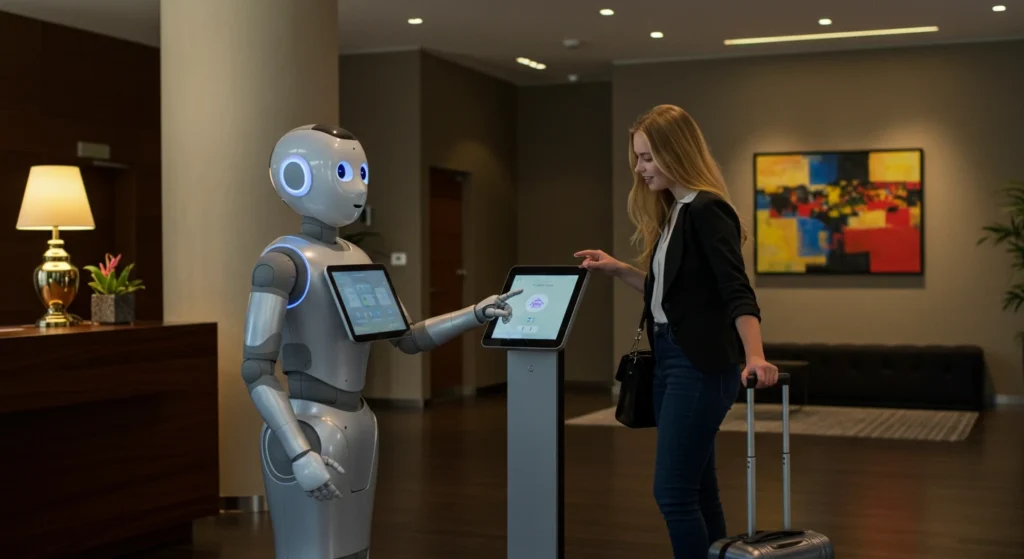
The New Frontier in Human-Robot Interaction
Humanoid robots are an exciting frontier in the development of smart robotics, offering not only advanced automation but also the potential to transform how humans interact with machines in emotional and socially meaningful ways. These robots are designed to mimic human gestures, expressions, and conversations making them ideal for roles in service, caregiving, and education. With faces, arms, and movement capabilities, humanoid robots blur the line between digital assistants and human coworkers.
Unlike purely functional machines, humanoid robots are equipped with sophisticated artificial intelligence that allows them to process voice commands, understand context, and adapt behavior. Some leading examples include SoftBank’s Pepper, Boston Dynamics’ Atlas, and Engineered Arts’ Ameca. These robots are being deployed in hotels, hospitals, airports, classrooms, and even private homes, where their presence fosters more natural and engaging human-robot collaboration.
Hospitality and Retail
In the hospitality industry, humanoid robots are revolutionizing customer service. Robots like Pepper greet guests in hotels, offer directions, and answer common questions, often in multiple languages. They provide a consistent and friendly user experience, reducing wait times and freeing up human staff for more complex tasks. In retail, humanoid robots assist customers by guiding them through the store, scanning items, and even processing payments.
These robots also use emotion recognition to adjust their tone and behavior based on the user’s facial expressions or vocal cues. This level of personalized service can enhance customer satisfaction and build brand loyalty. For example, some malls in Japan use humanoid robots to provide entertainment and help shoppers locate stores.
COVID-19 Use Cases
During the pandemic, humanoid robots played a pivotal role in limiting human contact while maintaining services. Robots were used in hospitals to monitor patients remotely, in restaurants to deliver food to tables, and in public spaces to offer health-related announcements. Their adaptability and immunity to infection made them ideal for these high-risk environments.
Education and Therapy
Humanoid robots have shown great promise in educational and therapeutic contexts. In classrooms, robots like NAO and Kaspar engage with children through storytelling, quizzes, and interactive games. They are particularly helpful for students with special needs, including autism, providing a predictable and non-judgmental learning partner.
In addition, in therapy settings, humanoid robots support individuals dealing with cognitive decline, trauma, or emotional challenges. Their consistent behavior and ability to deliver scripted therapeutic messages make them valuable tools for psychologists and educators. They can also monitor responses and adapt sessions in real time.
Supporting Teachers and Students
Moreover, teachers are finding these robots valuable for tasks like attendance, teaching language or coding, and giving feedback. Often, students often feel more comfortable making mistakes with a robot, which encourages risk-taking and exploration in learning.
According to a 2024 report by McKinsey & Company, advancements in robotics and automation are expected to contribute up to $4 trillion annually to the global economy by 2030. (source)
The Future of Automation: What Comes Next for Smart Robots?
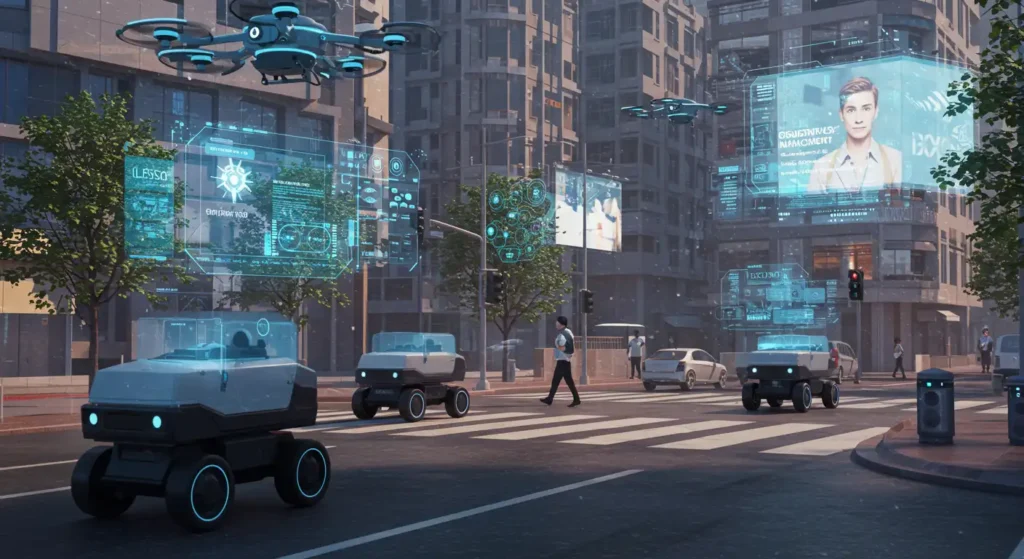
Integration With Smart Cities
The next frontier for smart robots goes far beyond individual homes and workplaces they’re poised to become the nervous system of smart cities. Increasingly, municipalities are beginning to adopt robotic systems to enhance traffic control, manage public safety, and provide services like waste collection and infrastructure monitoring. Smart robots integrated with sensors and 5G connectivity can collect data in real time, helping cities optimize energy usage, monitor pollution, and respond rapidly to emergencies.
Currently, autonomous delivery robots are already being deployed on sidewalks, transporting goods in a contactless and efficient way. In disaster zones, search-and-rescue robots equipped with thermal imaging and artificial intelligence pathfinding are saving lives. As governments and city planners seek to make urban spaces more efficient and sustainable, smart robots will play a crucial role in the implementation of these goals.
Ethical Considerations and AI Regulation
As the capabilities of smart robots continue to expand, so do the ethical and legal challenges. Questions arise about accountability if a robot makes a mistake or causes harm, who is responsible? The use of facial recognition and behavioral tracking raises significant privacy concerns. Governments and tech companies must work together to create clear regulatory frameworks that balance innovation with public safety and ethical responsibility.
Another concern is employment displacement. Moreover, as robots handle routine jobs, society must create new roles that harness uniquely human skills like creativity, empathy, and critical thinking. Education systems must adapt to prepare future generations for collaboration with intelligent machines.
Continuous Learning and Evolution
Unlike early robots that operated on fixed scripts, modern smart robots are capable of learning in real time. Reinforcement learning allows robots to improve performance based on outcomes. Edge computing allows devices to make decisions locally, which speeds up response times and reduces dependency on cloud connectivity.
This evolution means that robots can now adapt to new environments without human intervention. For instance, a delivery robot could learn a new building layout simply by exploring it. Over time, these machines develop a deeper understanding of their surroundings, becoming more autonomous and efficient.
Human-AI Collaboration
The most promising path forward is not competition between humans and robots, but collaboration. In medicine, for example, AI-assisted surgeries allow for greater precision while the surgeon maintains control. In education, robots provide supplementary instruction while teachers focus on emotional and social development.
More people now see smart robots as collaborators that amplify human capabilities, rather than as replacements for human workers. This symbiotic relationship is the cornerstone of a productive and balanced future.
“Human-AI symbiosis is the next leap in robotics enhancing cognition, not replacing it.” – MIT Technology Review
Want to embrace the future today?
Smart robots are no longer novelties they’re becoming household staples and essential tools in sectors from education to healthcare. Consequently, as home automation, personal robotics, and humanoid AI grow more sophisticated, our relationship with machines is transforming. Now is the time to explore how smart robots can simplify your life and enhance your future.
Subscribe to our newsletter for the latest smart robot trends, gadget reviews, and tips for building your smarter home!
